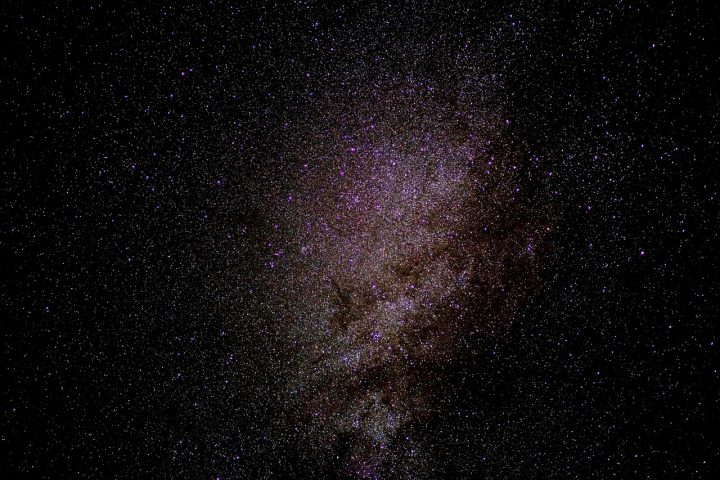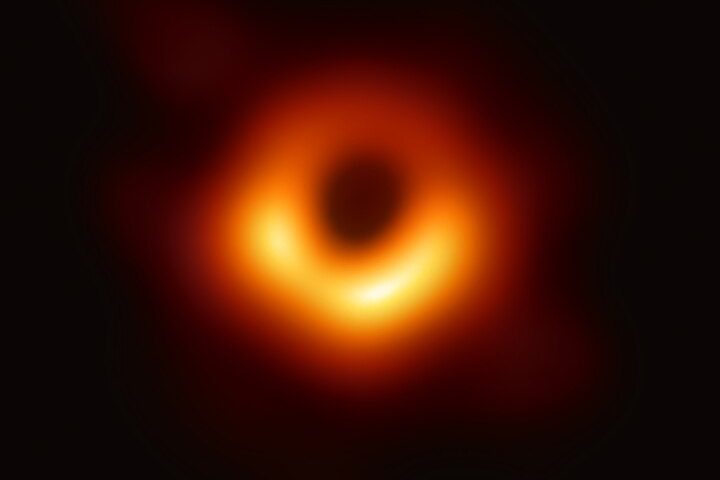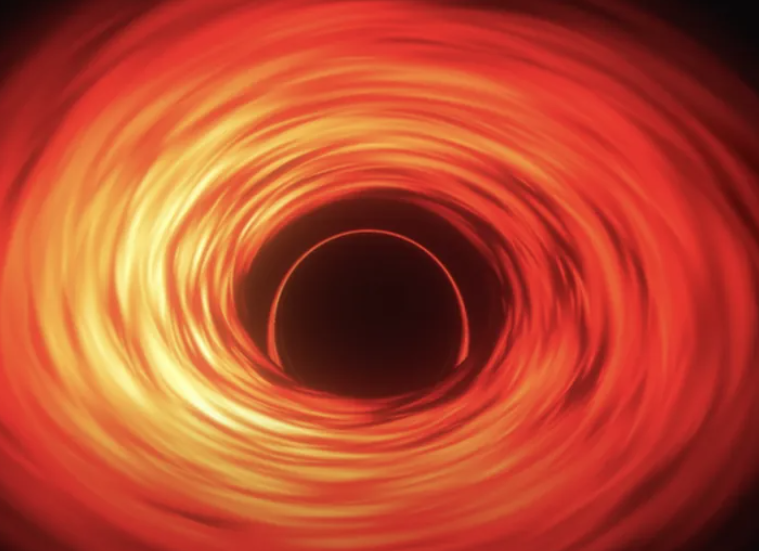Astronomers using the European Southern Observatory’s (ESO) Large Telescope (VLT) have discovered an enormously bright quasar 12 billion light-years away.
And this newly discovered quasar is truly a record-breaker. Not only is it the brightest of its kind, it’s also the brightest astronomical object ever observed. And it’s powered by the ‘fastest growing black hole ever seen’.
If you think you have a voracious appetite, this new discovery will leave you in the dark. Because this black hole swallows the mass equivalent of about one Sun per day.
- Hope for a Clean Future: Scientists to Use Earth’s Heat to Clean the Air!
- Scientists Develop Model to Study Self-Organized Cytoplasmic Streaming in Cells
Let’s look at the details of this important discovery, recently published in Nature Astronomy.
It’s so far from Earth that it took 12 billion years for its light to reach us
The ‘accretion disks’ around supermassive black holes at the center of galaxies make quasars the brightest objects in the universe. The black holes that power quasars powerfully accrete matter around them and emit enormous amounts of light. As a general rule, the brightest quasars point to the fastest growing supermassive black holes.
Black holes have gravitational fields so strong that we cannot see them. However, these ‘accretion disks’, which are formed by material such as disintegrating stars before they are swallowed, can be extremely bright.
Quasars can be briefly defined as ‘bright and active galaxy cores powered by supermassive black holes’. The black hole in this record-breaking quasar is growing in mass at a rate equivalent to one Sun per day, making it the fastest growing black hole known to date.
This quasar, called J0529-4351, is so far from Earth that it took 12 billion years for its light to reach us, meaning that the 13.8 billion-year-old universe looks like it did when it was just under 2 billion years old.
Christian Wolf, an astronomer at the Australian National University (ANU) and lead author of the study published in the journal Nature Astronomy, says about this important discovery:
We have discovered the fastest-growing black hole ever known. It has the mass of 17 billion suns and swallows a little more than one sun a day. This makes it the brightest known object in the universe.
The material being sucked into the black hole in the form of a disk is emitting so much energy that J0529-4351 is 500 trillion times brighter than the Sun. ANU PhD student and co-author Samuel Lai said, “All this light is coming from a hot accretion disk seven light years in diameter. This must be the largest accretion disk in the universe, 15,000 times the orbit of Neptune.”
We can’t see J0529-4351 in detail at this great distance, but its counterparts give us some strong clues. “It looks like a huge magnetic storm cell with temperatures of 10,000 degrees Celsius, lightning everywhere and winds fast enough to circle the Earth in a second,” Wolf says:
“This storm cell is seven light-years wide, which is 50 percent greater than the distance from our solar system to Alpha Centauri, the next star in the galaxy.”
Hidden for over 40 years because of its incredible brightness
“It’s amazing that it was unknown until now, when we know of hundreds of less impressive quasars,” says co-author Christopher Onken. Until now, it was literally staring us in the eye.” Onken adds that the object has appeared in images from the ESO Schmidt Southern Sky Survey dating back to 1980, but was not recognized as a quasar for decades.
Finding quasars requires precise observational data from large areas of the sky. The resulting datasets are so large that researchers often use machine learning models to analyze them and distinguish quasars from other celestial objects. But because these models are trained on existing data, they limit potential candidates to objects similar to those already known. For example, the program can categorize the object as a star not too far from Earth.
In studies using the Gaia space telescope, artificial intelligence programs were trained on known quasars and were unable to identify an object so distant from other samples. Automated analysis of data from Gaia passed over J0529-4351 as too bright to be a quasar and instead pointed to a star. “A human astronomer looking at the Gaia spectrum would have recognized the quasar and redshift at first glance,” the authors comment.
Using observations from a 2.3-meter telescope at the Siding Spring Observatory in Australia, researchers identified this celestial object as a very distant quasar. But it took measurements from a larger telescope and a more sensitive instrument to discover that it was the brightest quasar ever observed. The X-shooter spectrograph on ESO’s VLT in Chile’s Atacama Desert provided this important data.
The fastest-growing black hole ever observed will also be a perfect target for the GRAVITY+ instrument on ESO’s VLT interferometer (VLTI), which is designed to accurately measure the mass of black holes, including those very far from Earth.
In addition, the ELT, a 39-meter telescope being built in the Atacama Desert, will make it even more possible to identify and characterize such difficult objects.
Finding and studying distant supermassive black holes could shed light on some of the mysteries of the early universe, including how galaxies formed and evolved. While such extreme examples of these objects are rare, Wolf and his colleagues believe there are many more quasars waiting to be discovered in the vast and magnificent universe.
source: Compiled from European Southern Observatory and IFL Science article.





